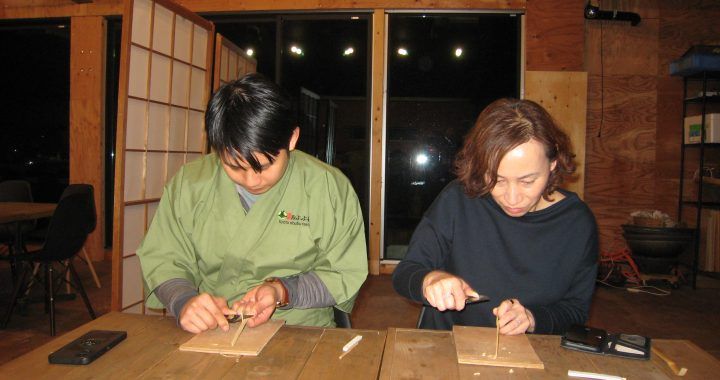My beautiful people!
Eva here, winter intern #187! I am not yet colloquialy known as spoon lady, but I do one day hope to be. Back home, making different spoons and utensils out of wood was one of my favourite pass times and coming here I was super interested in learning more about the process of making wooden utensils for tea drinking.
There are so many different utensils used for drinking tea all around the world and the wood and shapes differ from one tea culture to another. In Japan, the most common material used for making these utensils is bamboo.
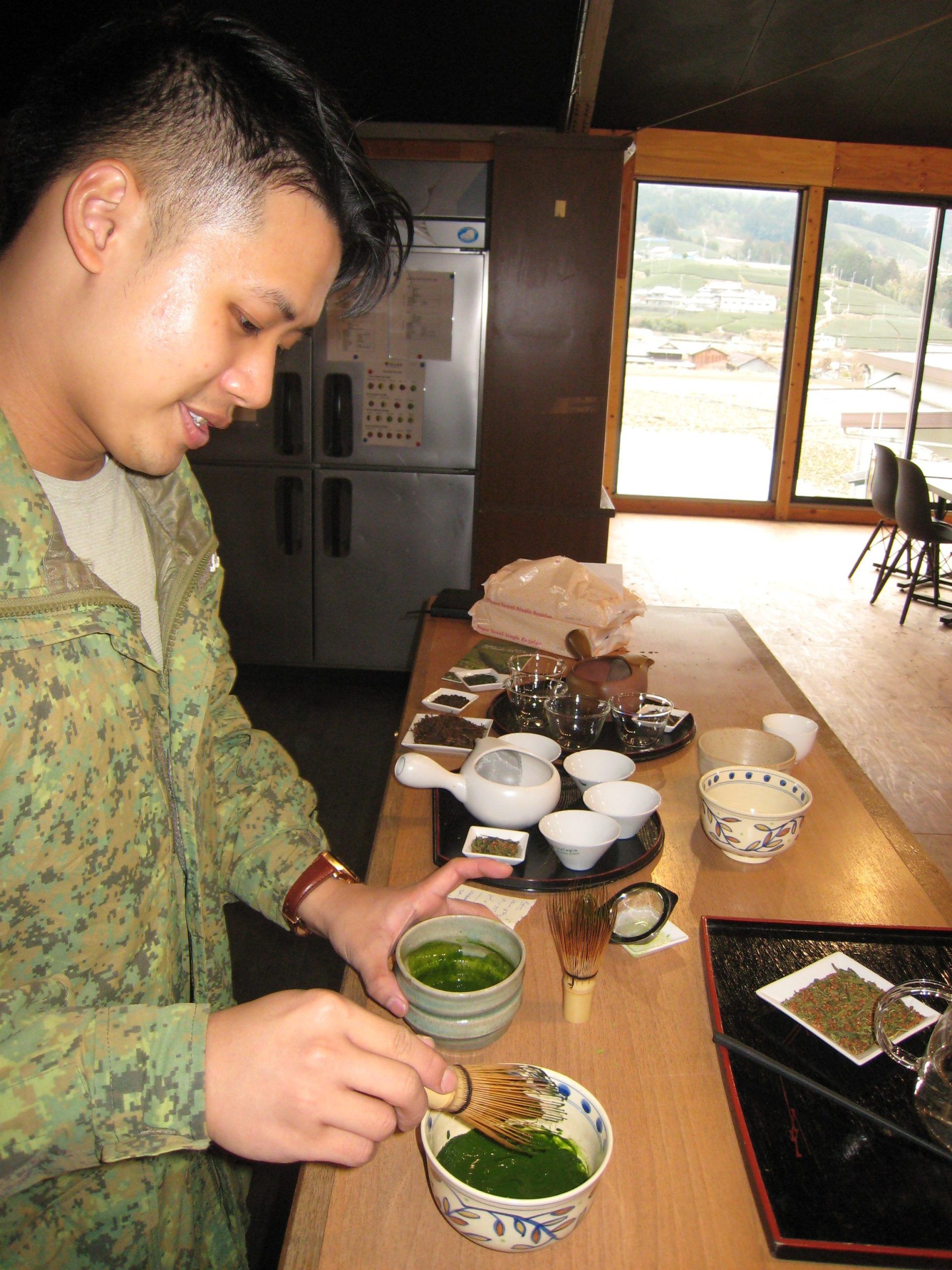
You’re probably familiar with the bamboo spoon and whisk used in tea ceremonies and matcha making at home, but there is a whole world behind and beside them. The different kinds of bamboo, how the utensils are made, how much work, love and dedication is poured into every single utensil crafted,.. All of this interested me. Coming to Obubu and learning about all of them, I started to wonder why we don’t talk about them more. I mean, they are always present, but we just don’t seem to pay as much attention to them as we do to pottery. And for pottery, we all know to never use detergent and wash unglazed clay wares only with water, to use clay pots for brewing only one type of tea as those absorb the flavour of tea,.. What about the chasens?
I admit, even if I had been interested in different wooden utensils and was even using them in my life regularly, I learned so many things about how to take care of them during my stay here at Obubu.
And that is precicely what I decided to dedicate my intern project to. Over the course of my stay here I have met a bunch of people, who had no idea how to properly use and take care of their wooden utensils. They complained that the tines on the tea whisk were breaking off, that matcha was staining and moulding on their scoop,.. I simply had to take matters into my own hands, so for “first aid kit”, I created a simple and practical guide on use and care.
Japan has a very long tradition of tea drinking alongside a very rich and long history of bamboo work and woodwork. From weaving baskets and tea shading materials, using bamboo in building and construction evolved very practical and utilitarian household bamboo items. Naturally, the use of the materials evolved and artisans started crafting beautiful ornamented treys, decorations, we can even find wooden knife handles with very intricate designs whittled on them. Almost every prefecture started to be recognised for its own style, but woodworking techniques really started to develop with the arrival of Buddhism, pouring a lot of effort into temple furnishings and statues.
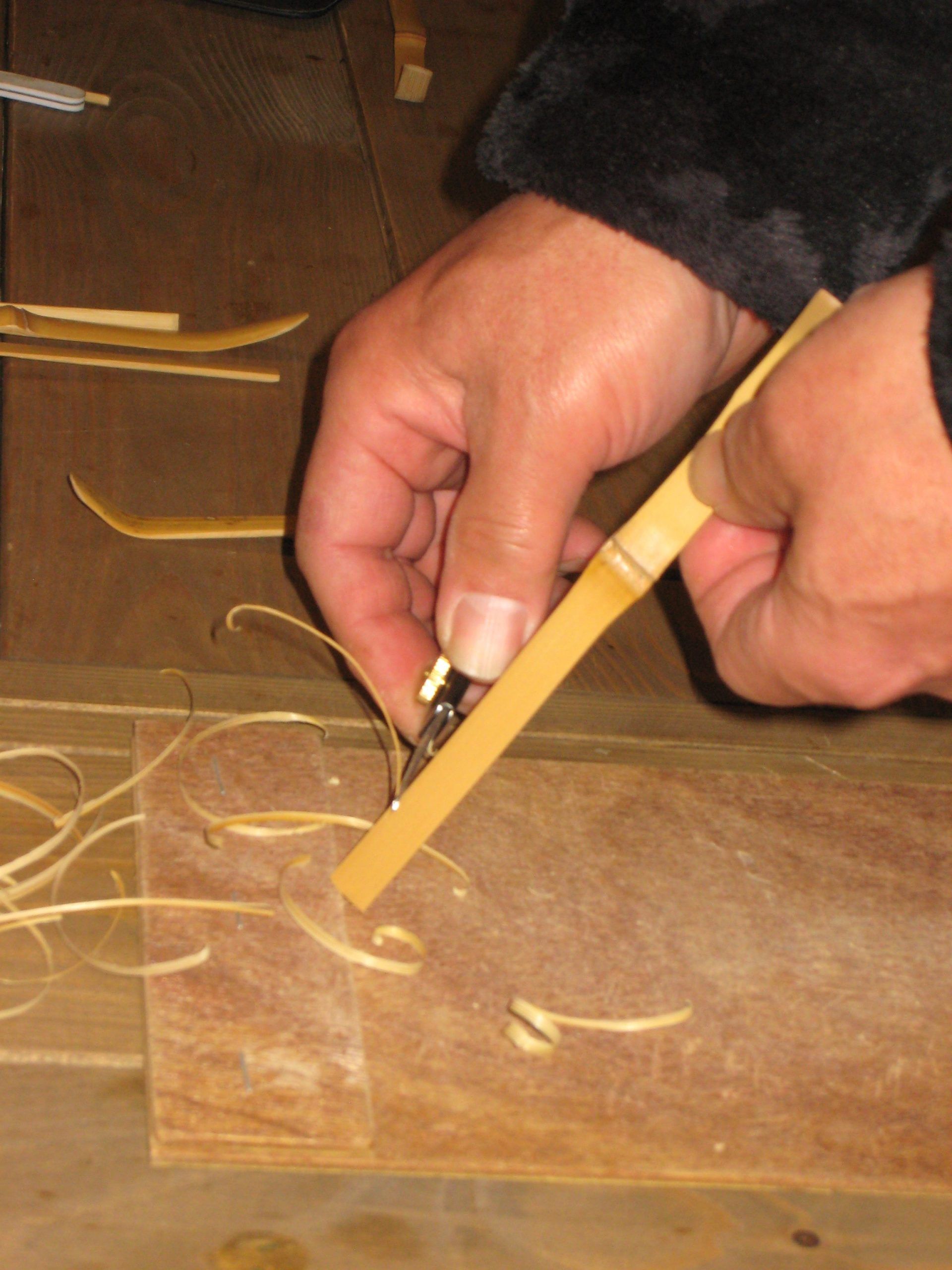
It wasn’t until a little later, during Japan’s Muromachi period (1336-1573), that using bamboo for crafting cutlery and beautiful tea utensils started to flourish, following the rising popularity of tea ceremony.
For my project, I focused mostly on the bamboo utensils used in making matcha, because I would have had to stay at Obubu for at least a decade if I wanted to do all other types of woodwork in Japan, it’s use and history. There are so many different types of wood are used, countless techniques applied,.. It’s actually crazy!
Throughout the decades, Japanese craftsmen used wood such as cedar, zelkova and bamboo. To them they applied different woodworkig techiques. For bamboo work specifically, many techniques include weaving bamboo strips, using the natural flexibility of the material to the advantage. But for tea utensils like the chasen (whisk), chashaku (scoop) and hishaku (ladle) one single piece of bamboo or two pieces together are used.
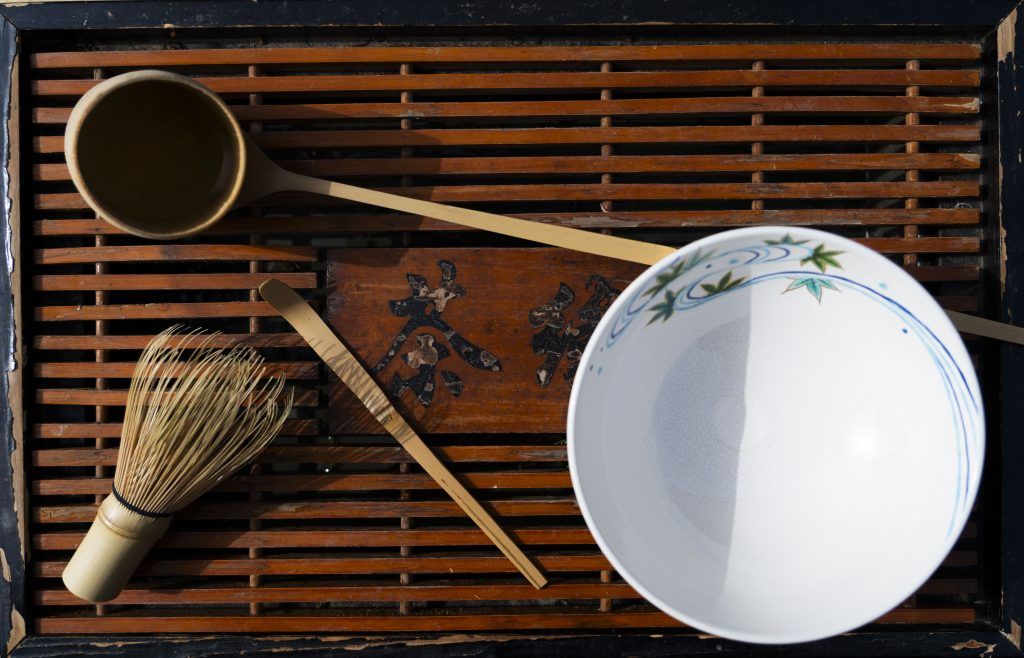
The bamboo used for making tea utensils in Japan has to be aged for a while after harvesting. Usually, bamboo would be felled and dried during the winter, when the insect activity is quite low. The aging process lets the wood dry and become much more durable. On the market, you can find many chasens made from freshly harvested bamboo, but those generally don’t last a very long time, as they can mold quickly and the tines are much more brittle. Moreover, bamboo has a greater number of vascular bundles of large surface area than wood and can be split very easily.
A very sought after material for making whisks and tea spoons has been smoked bamboo. This is wood that has darkened over time as a result of being used in ceilings above kitchen stoves in old houses. It is not only very durable, but the smoky patterns and shades make it look so beautiful.
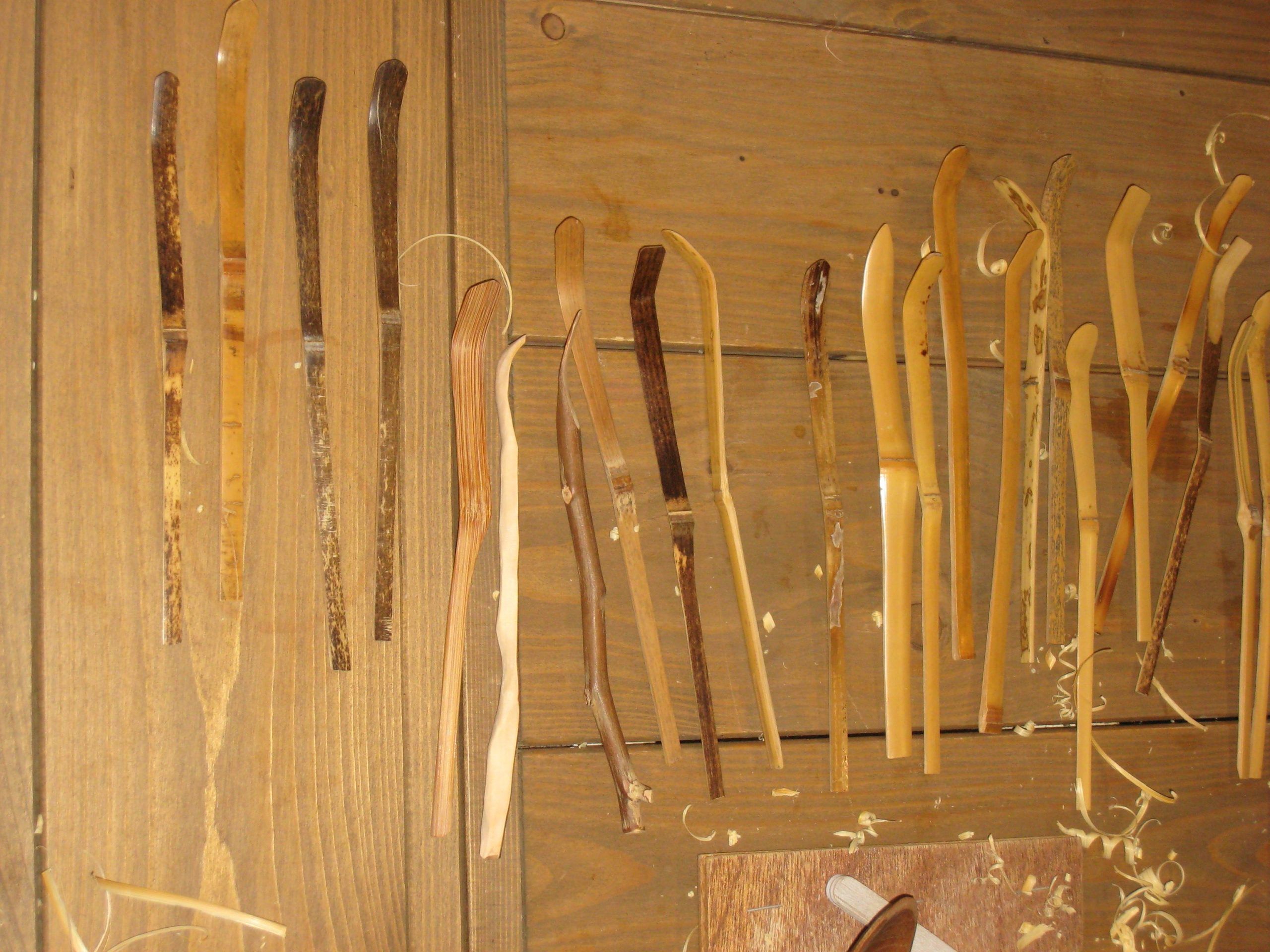
The tea whisk called chasen is believed to have originated in China during the Song dynasty period, when it was used for preparing diancha, a type of Chinese powdered tea. Interestingly enough, the tea scoop known as chashaku, is a Japanese invention from the Muromachi period. I suppose, with so much tea drinking people didn’t want to make a mess with preparations, so they made a scoop for this powder. At first, the chashakus were made out of metal and ivory, but after a while the tea masters found wood was the most effective material to use.
There are many variations of the chasen, mostly distinguishable by the number of tines they have. They are made from a 10 cm bamboo pipe, where one end is split into thin threads called tines, that are then bundeled together with a string. The amount of these tines can differ from as low as 16 tines to as many as 120. Chasens with less tines are used by more advanced tea masters for stirring a thicker matcha. On the contrary, chasens with more bristles allow for more foam to appear and are usually recommended for beginners. A cool thing to look out for is that Japanese-made chasens tend to have a softer tip, which will help you whisk smoother tea with more delicate bubbles. And they also tend to last a little longer.
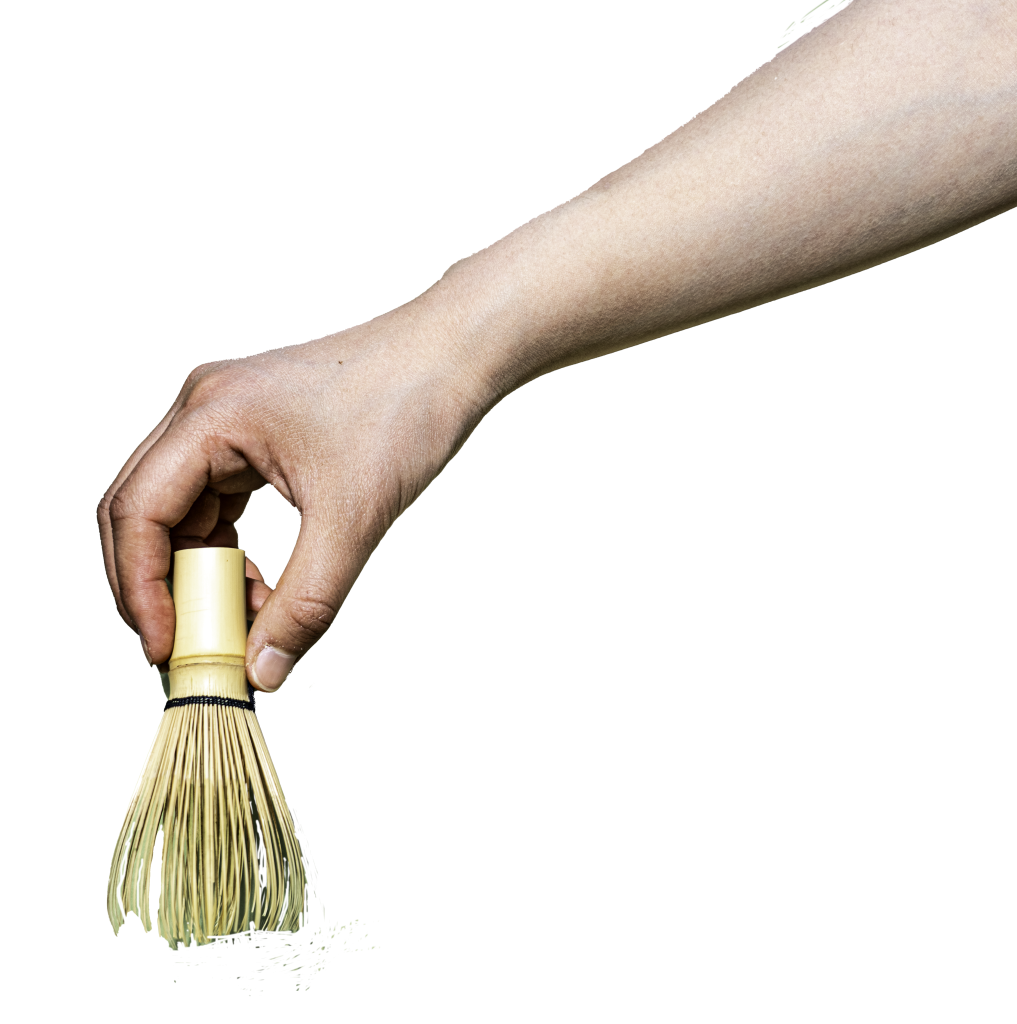
As part of my project, I really wanted to visit a chasen making place or even attend a workshop, but we ended up making chashakus with the coolest human possible, I think. One rainy evening, Kagoshima-san, a DJ turned tea farmer and chashaku making master, came to Obubu, showed us his chashaku collection and then walked us through the crafting process.
Chashaku is about 18 centimeters long and cut from a single piece of dried and aged bamboo. After cutting the desired lenght and width, Kagoshima-san held one end over a candle flame to bend it.
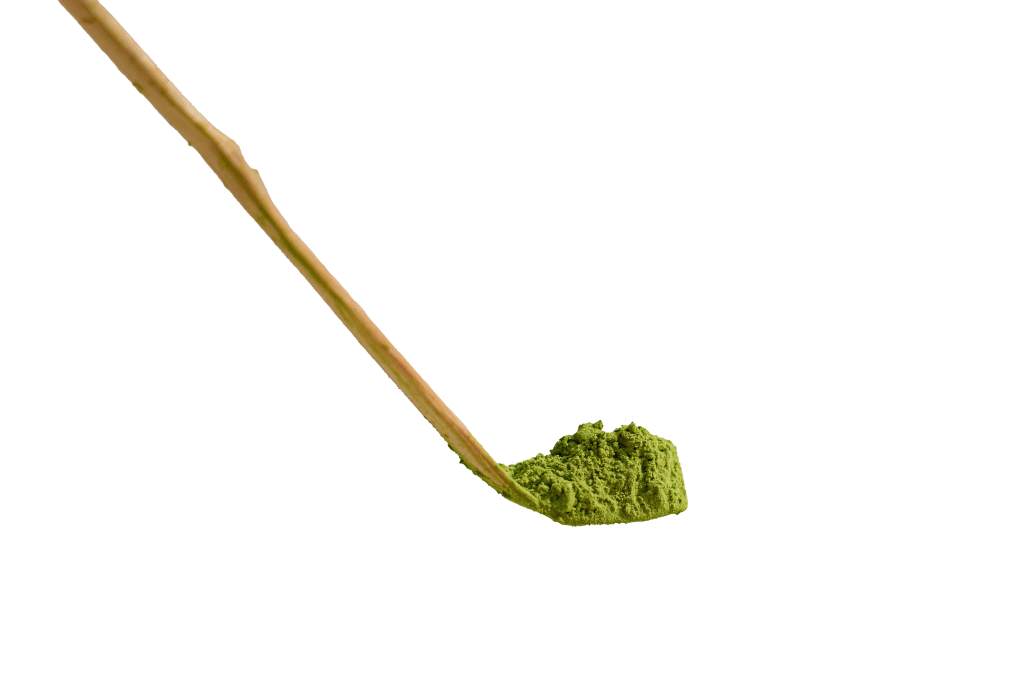
Then, we went to work. A little bamboo, an X-acto knife in our hands and a dream. First, we had to shape the handle of the chashaku. Working with bamboo was a lot different than the cherry tree wood I make my spoons out at home. I was completely mesmerised. After making the handle it was time to shave off the excess wood on the back, before moving on to shaping the scooping end.
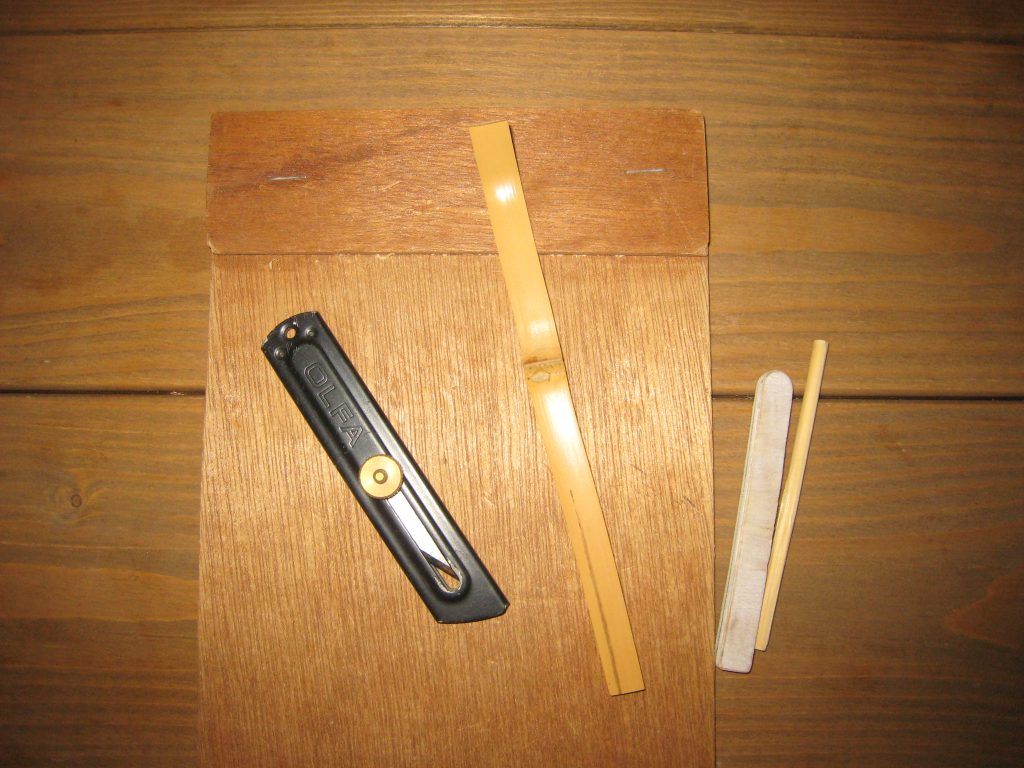
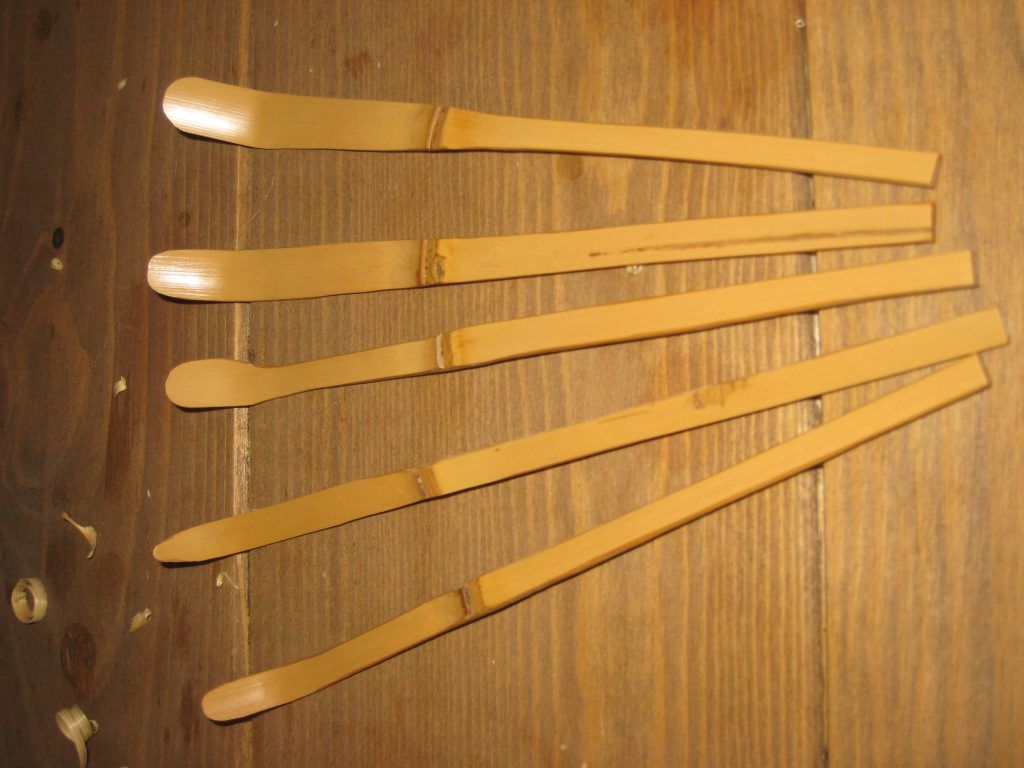
On these pictures you can see some chashakus from his collection and the ones that we made. Can you guess who made which? It was a friendly competition between me, Katrina (AM), Joshua (intern #188) and Kayo-san.
There are, of course, still so many other wooden utensils in the world of japanese tea. The hishaku used for scooping water and transferring it into vessels, the sencha wooden scoops, tea caddies and chabako (big wooden boxes for tea storage), the cutlery for wagashi, little coasters and brewing trays,..
Every single utensil, however simple, is a thing of absolute beauty and craftsmanship and I feel like I learned so much while making this project. Not only did we have the chance to make our own chashaku with the coolest person ever, I learned so much about why certain steps in use and care are important for natural wooden materials and being able to share that with everybody is what makes all of it worth it.
So please, soak your chasens in hot water before whisking and never, and I really mean never, wash the matcha off of your chashaku with water – a wipe with a dry cloth is the best for its longevity!

